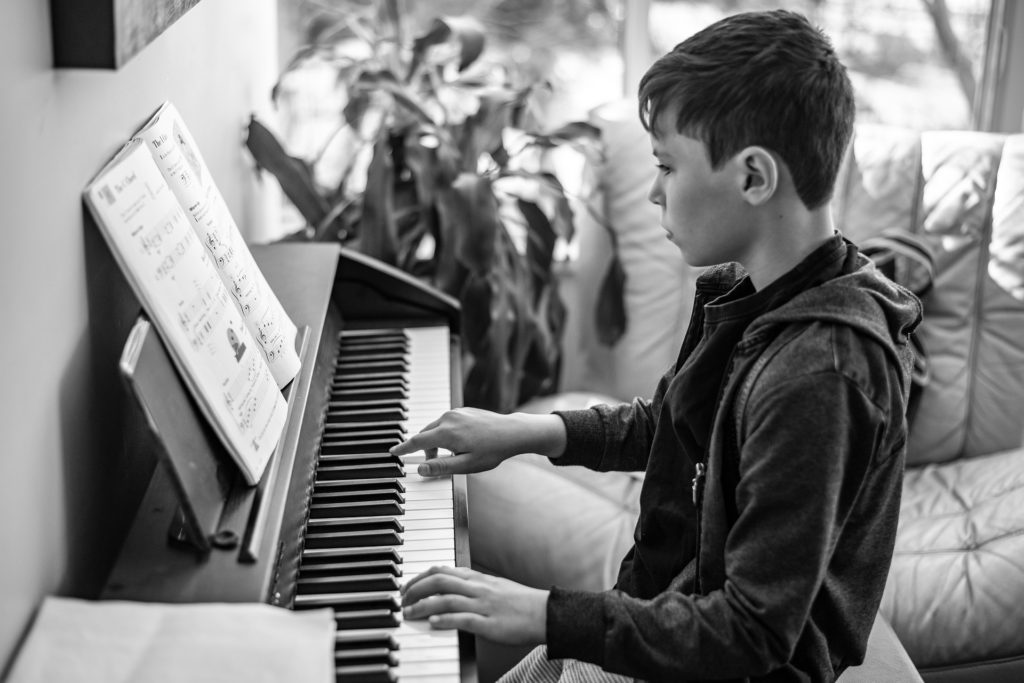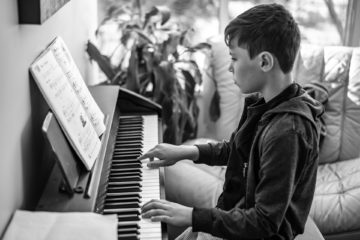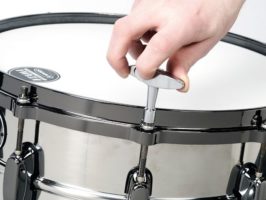
Practicing music at home is something that every teacher encourages religiously. After all, it’s extremely important! Students just don’t make the same kind of progress when practice doesn’t happen and their motivation levels fade quickly.
That said, students who otherwise might be excited to practice can easily come across many obstacles when they are at home. This is normal and it happens with every family. But, it can make or break a student’s love for music.
Here are some ideas for reigniting the “practice” spark in your home and ensuring your child gets the practice that will fuel their musical passion and lead to their success.
Make a Routine
Sit down with your child and decide on a time every day that will be “practice time”. Pin the practice schedule to your refrigerator and remind your child daily that they have made the commitment. Children appreciate predictable routines and your child will be more likely to practice if they can count on doing it at the same time each day. Remember, the goal is at least 5-10 minutes of practice each day. But, the more the better! If you can schedule several small practice sessions throughout the day, this will keep the child better engaged for entirety of each session and always ready to start fresh.
Assign a Practice Area
Always make sure your child knows where in the house they can practice. This is best done by selecting a spot that will be designated as the “practice area”. If they can count on that space being strictly for practice only, that is even better. If it is necessary to store other objects in the area, just be sure your child knows how and where to move anything in the way when they go to practice (and that they have your permission to do so).
Prevent Distractions
We all know how easy it is to be distracted from a goal. Even when a child loves playing music on their own accord, they can become easily distracted by, well, most anything when practice becomes required. As such, it is important to keep the practice area free from common distractions such as the TV, sibling interjections, pets, and anything else that might compete for your child’s attention. Do everything you can to be sure the practice area itself acts as an invitation for the child to practice.
Keep Organized
Suppose your child is committed to practicing for 10 minutes a day. If it takes them 5 minutes to find their music and another 5 minutes to unpack their instrument, they could argue that have already used up their full 10 minutes. Start by de-cluttering the practice area and finding a safe spot right next to their instrument which will be designated for music. Check with the student every week to be sure they know what they are to be practicing and make sure their current music is at the front of their music folder. If sheet music easily gets lost, make a copy to keep on the music stand and leave the original in the folder the child brings to their lessons.
Be Present
It is extremely helpful for parents to be around when the child is practicing. The extent to which a child will want a parent involved will vary. Some children will want an interactive audience sitting by their side. Others, will be happy just with someone in the room. Still others will simply enjoy knowing that the people in the other room were listening. Ask your child what they prefer and try to mix it up, gauging your child’s reactions and regularly doing what motivates them best.
Stay Positive
Always, always, always be encouraging and positive about your child’s home practice attempts. As a number of my students have parents with musical backgrounds, this is especially important (and difficult!). We all need both teachers and cheerleaders for different areas of our lives. Receiving too many corrections could easily overwhelm a child. And, we must remember that it is especially difficult to receive advice from family members (particularly for preteens and teenagers). The child’s lesson time is absolutely the best place to correct mistakes and to be sure they are on the right track. It is better for parents to simply be enthusiastic about the learning process.
Ask Questions
Children love to tell you when they know the answer to a question! And, asking questions about their music education will show them you care about it, too. You can start by asking them what song they are learning. Or, if they can play a song for you. You can also ask them to show you where they put their hands, how to play a certain note, what notes are in the song, how the rhythm goes, and so on. If you know what you are doing, questions are a good way to subtly get your child on the right track without overwhelming them. If they don’t know an answer, let the teacher know and it can be discussed in the lesson.
Give a Good Reason
It easy to say that practice is important because it will make the child a better musician. But, sometimes that’s not enough. Think of fun ways to motivate your child other than using the “because I said so” mantra. One idea is to try scheduling a weekly performance with family members in person or via Skype and say “Grandma and Grandpa want to hear how you are improving!” Also, encourage students to sign up and prepare for as many school and community performances as they can. A slightly different approach might even be to log your child’s practices on your own and offer an extra scoop of ice cream once a month if the child meets their practice goals.
Play a Music Game
Games make music learning both easier and a lot more fun. There are many great educational games both for general music learning and for specific instruments. I will post some of my favorites here shortly. In the meantime, email me (or your teacher) for ideas on games that are specific to your child’s current level of playing.




